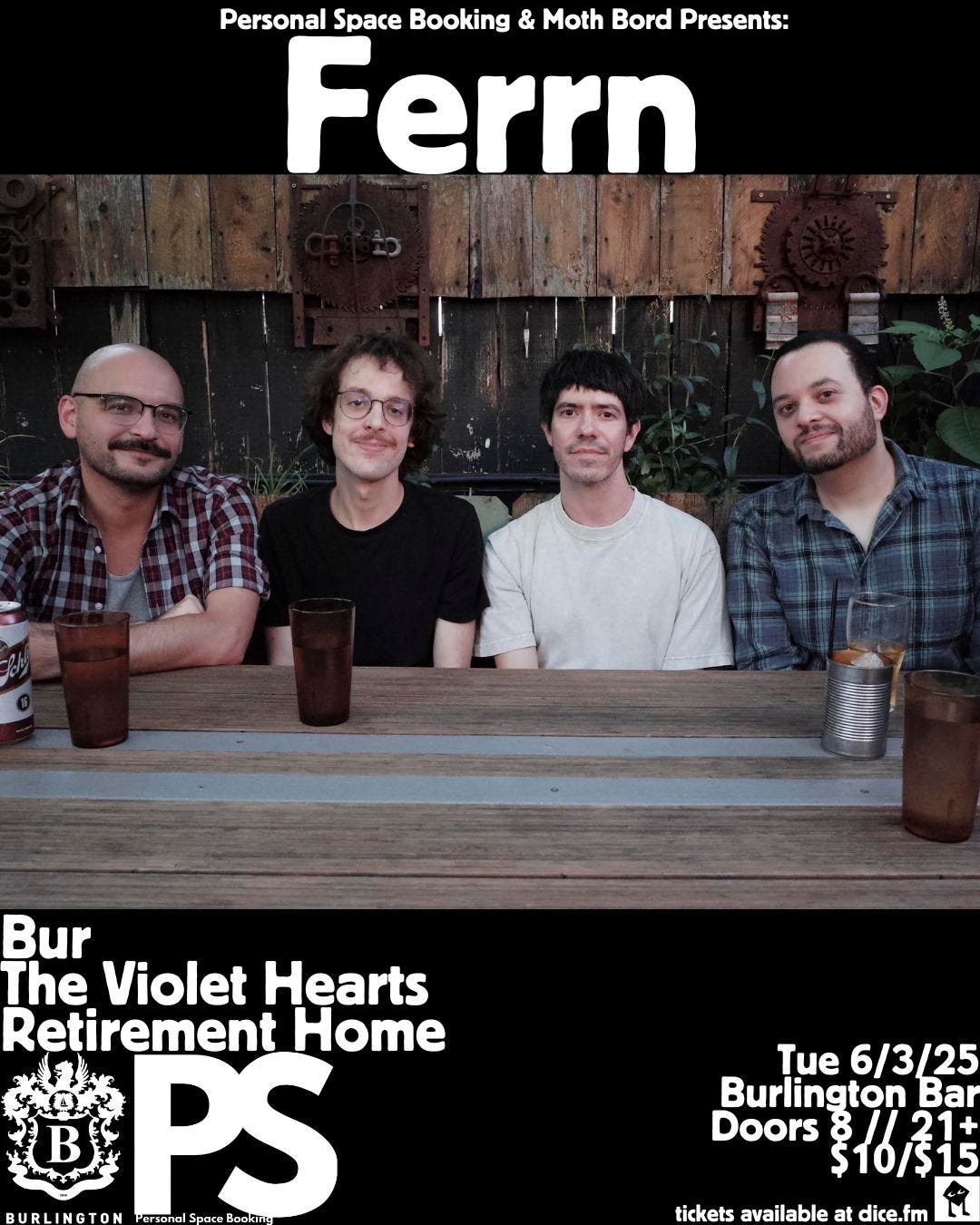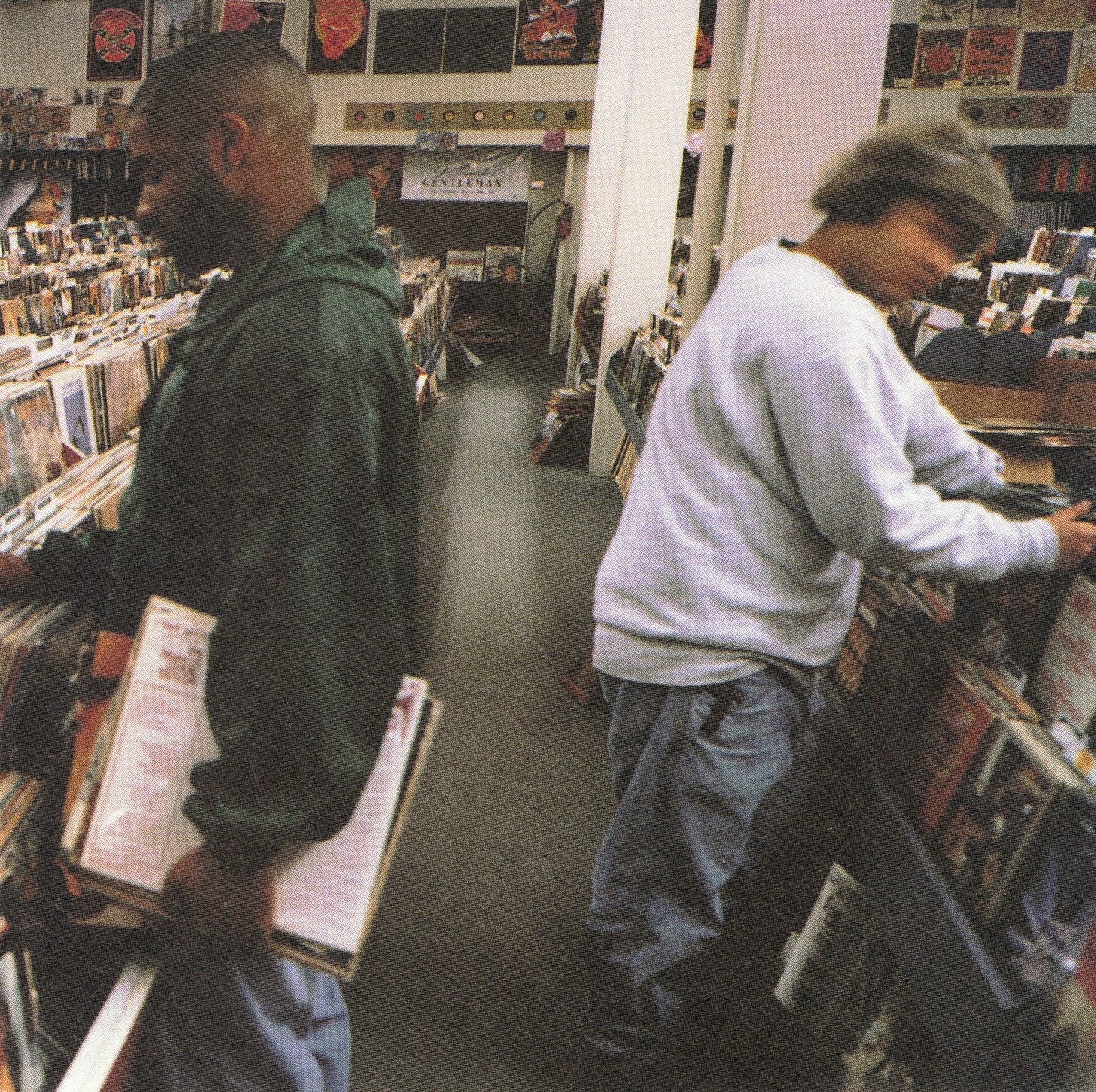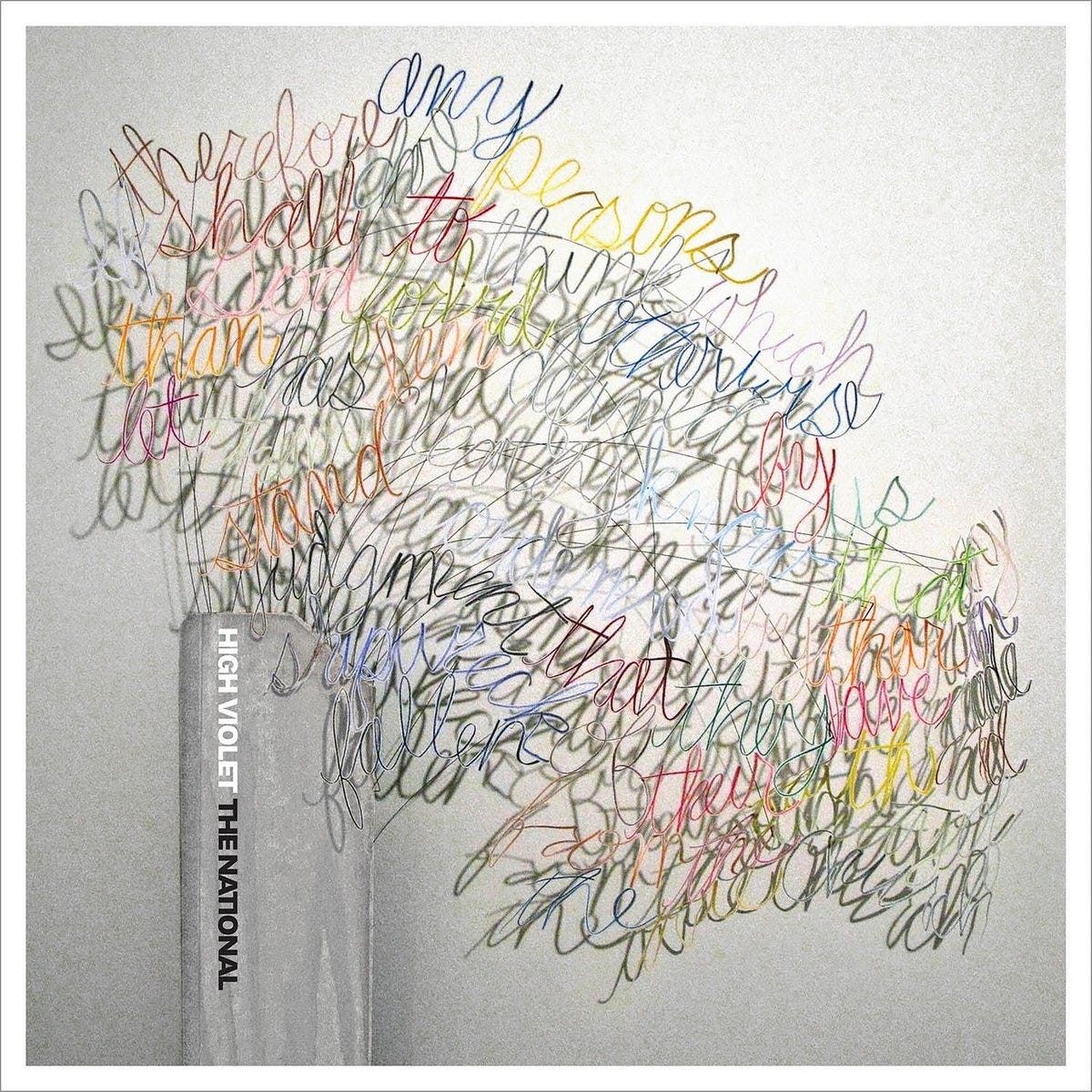Last month I bought a new cymbal. This happens so rarely that it qualifies as news. Despite my preference for big, loud, maximalist music I’ve always limited my gear to the essentials. I only use one rack tom. I only own one pair of hi-hats. I typically only buy a new drum or cymbal if a piece of gear I already own breaks down, which is how I came into the ride and snare that I currently use. I don’t like owning a lot of things, so if I commit the cash and storage space to a new piece of gear I *really* have to want it. I’ll get into why I wanted this particular cymbal so badly, but first why don’t you take a look at it:
That is a Zildjian 16" FX Trash Crash Prototype. The first thing you’ll notice about it is that the surface is perforated with a number of small holes and marked by several indentations. These serve more than just an aesthetic function. The holes reduce the surface area of the cymbal, which in turn speeds up the decay. The indentations I’m less certain about, but I suspect they play a role in the cymbal’s darker tone. So why would I want a cymbal with a short decay and a dark tone?
First, kit balance. My other crash, a Paragon Neil Peart signature, is brighter than an electric car’s headlights and has a long, healthy sustain. I wanted to get a cymbal that provided as strong a contrast as possible with the gear that I already owned while still remaining versatile. If I’m not going to own many cymbals I need the cymbals I do own to serve multiple purposes. The Paragon crash for example can be used as an alternate ride. My Dark K ride is a little too thick to be a primary crash, but it takes a hit well enough to work as a supplement to my other two. By the same token the FX Trash crash is percussive enough to work as a china, but still sounds like a crash. It even makes for a really, really weird ride, though I haven’t found a good use case for that yet.
While I’ve been meaning to a cymbal like this one for a while now, I finally pulled the trigger because of two projects from wildly different genres. Back in Brooklyn I started writing songs with Ivan Belcic (Kosmogyr) and Coleman Bentley (Fliege) for a death metal-ish band whose name I cannot yet reveal. This summer I’ll be recording my drums for our first full length record. Though Ivan and Coleman brought me on board fully aware that I didn’t plan to write conventional extreme drum parts, I still want to meet them halfway. With extreme metal the more cymbals the better. I tell my students that crash cymbals are like exclamation points. Extreme metal exclaims constantly!!!! A single crash would start to sound redundant by the end of the first song. A second crash with a noticeably different profile goes a long way toward keeping things fresh. Plus, nothing starts a mosh pit faster than a china cymbal, which the FX Trash does a good job of approximating. As it so happens, this mix of crash and china also makes the FX Trash a great fit in jazz fusion contexts. A short decay leaves room for more notes, and the smokey darkness of the crash is a good fit with the harmonic density of jazz. With a Ferrn show coming up (more on that below), I knew I needed to stock up on the right sounds.
How is it that a cymbal so distinctive works so well in such disparate contexts? Well, back in March I wrote about how good drumming has homogenized into a single genre agnostic style. Part of that homogenization is the type of gear that high level drummers use. While I haven’t seen any big names play the FX Trash (it is a prototype, after all), I’ve seen plenty of drummers use similarly perforated crashes to the same end. I’m 90% sure that the first Ozone Crash (Sabian’s version of the concept) I ever saw belonged to Eric Moore. The first Ozone Crash I ever saw up close and in person belonged to Emmett Ceglia of Semaphore. Both great drummers working in completely different fields. Quick decaying cymbals like these perforated crashes, cymbal stacks, bells, and chinas are all essential elements in modern drumming, but why? I can think of two factors. First: higher recording fidelity. The better our recording technology gets, the more it matters for the cymbals to leave sonic real estate open for the rest of the kit. A cymbal that washes everything else out in high frequency ringing isn’t as useful as one that gets out of the way quickly. Second, the proliferation of electronic drum sounds and increasingly complex sound design in electronic music. The old reliables of big crashes and rides don’t come close to providing the wide range of tones asked of modern drumming. Cymbals like the FX Trash help close that gap. Scooping up this cymbal was a necessary step into the 21st century. Now let’s see what the future holds…
# # # # # The Promo Zone # # # # #
After months of hyping up our exquisite collective taste in my Listening Diary, the time has come for Ferrn to hit the stage and show the world what we’ve made of that impeccable ear for rad music. That’s right, on June 3rd Ferrn will make its live band debut at The Burlington in Chicago, IL. We’re performing with Bur, The Violet Hearts and Retirement Home. Grab a ticket in advance and we’ll see you in Logan Square soon!
This is your weekly reminder that this newsletter is made possible by the continued support of my paying subscribers. They make it possible for me to carve out time to listen to a ton of music, help pay for my practice space and gear (I break a fair number of drum sticks) and give me the motivation to keep working on my writing week after week. To show my appreciation I send them exclusive bonuses like annotated playlists, early and behind the scenes access to my music and more. If you’ve enjoyed this newsletter consider subscribing for $5 a month, or the discounted price of $40 a year.
~ ~ ~ ~ ~ Listening Diary ~ ~ ~ ~ ~
Listen to this year’s running diary on Apple Music.
“Forbidden Thing (Kimmotsu)” by Hakushi Hasegawa (Mahogakko, 2024)
A rare relaxed track from the otherwise overstimulated Hasegawa discography. There’s still plenty of sonic information zipping by here, the whole thing is based on a quick 3 against 4 polyrhythm, but the simple and pretty arrangement makes it go down much easier. Always funny to hear an artist tastefully include a click track in the mix.
“Rainstorm” by Soshi Takeda (Secret Communication, 2024)
Lovely dance tune, the kind that’d play in the background on a character select screen of a turn of the millennium racing game.
“Cirrus” by Graham De Wilde (Clouds, 1981)
Here’s this week’s Ferrn recommendation. Ryan put this on in the car as we were driving back from practice. Being really into library music feels like a moral grey area in an era of for-hire streaming slop, but hey, I can’t deny that this is some slick jazz fusion.
“Fiery Gun Hand” by Cardiacs (Sing To God, 1996)
Years ago my old Invisible Oranges coworker Jon Rosenthal posted about Cardiacs, speculating correctly that they were an influence on the prog metal band Wilderun. I like Wilderun and collaborated with their bassist Daniel Müller on the Lamniformes song “A Crack Along The Doorway”, so I felt obligated to give Cardiacs a fair shot. I bounced right off of them the first time, but now with a few more years of Progmatism under my belt I was compelled to give them another chance. Fair warning, you’ll either love this or it will ruin your day. “Fiery Gun Hand” is halfway between prog rock and punk, utterly British, potentially the most annoying song you’ve heard all year or an introduction to your new favorite band.
“Bullseye” by Open Head (What Is Success, 2025)
Shouts out to Kingston, NY. Great little town, awesome place to play live. Open Head hail from that neck of the woods and play a noisy, clattering take on post-punk and no wave that you’d likely expect to originate further downstate in the far less wooded environs of downtown Manhattan. I would have loved to play a show with Laughing Stock and this band, if only to watch their drummer shred beats like this up close. Though I’m not expert on the subject this reminds me a little of early Sonic Youth.
\ \ \ \ \ Micro Reviews / / / / /
Here are five micro reviews of albums from my vast Rate Your Music catalog. Long time Lamniformes Instagram followers will recognize these from my stories, however they’ve been re-edited and spruced up with links so that you can actually hear the music instead of just taking my word for it.
Facing The Thousand by Light This City (2006) - Death Metal
Anytime the question of “the most underrated metal band” crosses my desk, one of the first groups that comes to mind is Light This City. I usually end up going with a different answer, but Light This City’s continued obscurity perplexes me to this day. Look, I’m not going to argue that this band were some cutting edge, unrecognized innovator. They were very much of their time. However, I do think they may have had an easier go of it from a marketing perspective had they hit the scene in the 2010s as the metal scene got slightly more open to women’s perspectives in music. If I had to speculate why this album didn’t connect, the drums and vocals are both a little too busy in a way that crowds out the rest of the music. Still, there are other bands from this era that had the same issues and people don’t seem to mind at all (the singer of one of those bands even shows up on this album *cough cough*). Anyway, when it comes to “three chords, two guitars, and the truth” in the melo-death mode, Light This City deserve to be mentioned as one of the best of the bunch. Every song here has a moment that demands attention and righteous scowls from the audience. The band is especially good about changing the tempo at juuust the right moment to catch the listener off guard. This should have been their big breakthrough, but they’d get even better on the next record.
Stormchaser by Light This City (2008) - Death Metal
Get me zonked on truth serum and I’ll admit that my appreciation of Light This City’s early records mostly stems from their unrealized potential. Stormchaser sees that potential realized. A shame they (temporarily) called it quits after this. Maybe this album’s excellence comes from the freedom of having nothing to lose. Another major factor in this album’s improvement: the drums. Finally free from pulling double duty on guitars and drums, Ben Murray sounds as if he devoted all his energy to complimenting the songs and driving them forward instead of slathering every riff with blast beats. This creative leap was well timed, because Stormchaser features the best songs Light This City have written to date. Some of that comes from the way they embrace their Bay Area thrash roots (Chuck Billy of Testament does a verse!), but more than anything its their attention to detail, their choice to play this cymbal *here*, change the tempo *now*, switch up the feel of a riff at just this exact moment, that sets songs like “Sand & Snow” apart from the rest of their work. An unheralded highlight of the late 2000s American metal catalog.
The Beyond by Cult of Luna (2003) - Post-Metal
In my Micro Review of Cult of Luna’s Salvation I claimed that record was their first “truly good” album. Upon revisiting The Beyond I have to admit that I was wrong. This, their second full length, is their first legit good album. It is however a long one. Not exceptionally long for Cult of Luna, they write door stoppers not novellas, but the band never again devoted so much duration to this much sonic wattage. The punishing density isn’t the only sign that Cult of Luna were closer to their hardcore days, the record is also peppered with Chomsky soundbites that suggest the political commitments of a d-beat group. This light, leftist seasoning suggests that we hear the band’s slow rolling and relentlessly loud songs as the gnashing of a globalized economy’s gears against the soft flesh of human happiness. Despite this grim setting, Cult of Luna can’t help but sound pretty. Is that a pedal steel? A church organ? A glimmer of hope at the bottom of Pandora’s shipping container.
Endtroducing….. by DJ Shadow (1996) - Trip-Hop
A history of 20th century music media in miniature: an album made from samples of vinyl records, released during the height of the CD era and arranged to make the most of the medium’s storage capacity, which I first heard through illegal file sharing, that now sounds archaic in the context of the streaming ecosystem. Here we have a road not taken by those who wish to study to the dulcet tones of instrumental hip-hop. Modern lo-fi takes after Dilla and Donuts, keeping the loops short and sweet, an approach more conducive to playlist-ing. DJ Shadow on the other hand keeps his tracks long and unwieldy, all the better to kill time when you had to change the music one CD at a time but a harder sell in the modern background music paradigm. As interesting as its ill-fit with predatory audio companies is, I don’t find myself too compelled by the music itself anymore. It is a feat of drum programming and bargain hunting to be sure, but it gets pretty boring once you get used to the “trick”. I’d recommend it as a historical document, but not a timeless one.
High Violet by The National (2010) - Rock
This was a big hit with my indie-loving friends in both New York and Chicago when it came out. Since I was just beginning to flirt with the idea of being open-minded in 2010 I gave it an honest shot. In retrospect it is a little strange that a bunch of 18-20 y/os resonated so hard with an album so resolutely middle-aged in both its sound and its concerns. Never the hardest of rockers, on High Violet The National render their guitars into a La Croix-esque mist; just the hint of the memory of the sound. Makes sense that the Dressners crossed over into pop production, the arrangements do a great job of putting the vocals front and center even with a rock band & then some of instruments competing for space. Whether The National works for you depends on how you feel about the subject in the spotlight. Frankly, this album makes being in a successful rock band sound miserably dull, wracked as they are by heartland transplant survivor’s guilt and quotidian marital discord. You know what is exciting though? The drums, baby! Lots of great parts on this record, really clever arranging, subconsciously a big influence on my playing with Laughing Stock.










